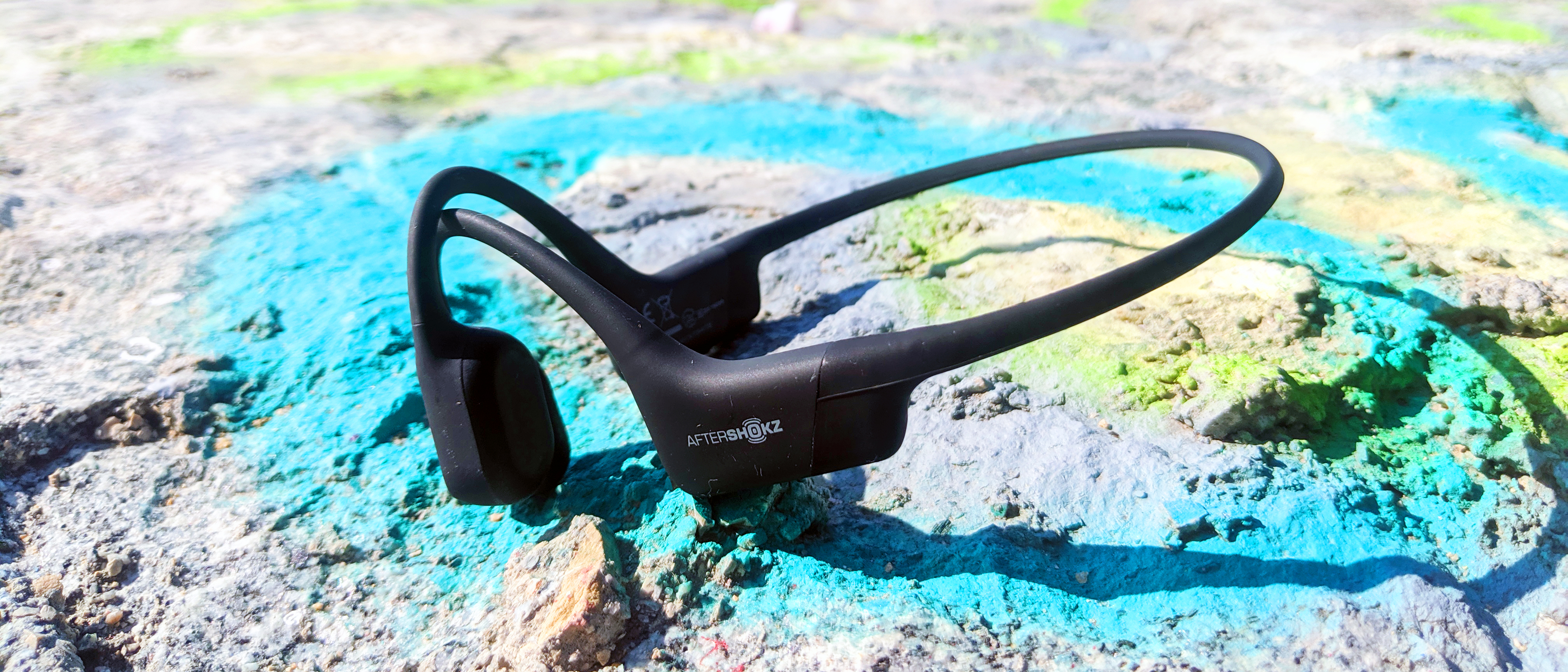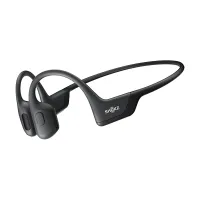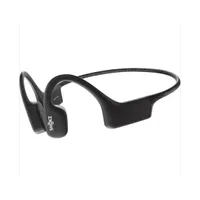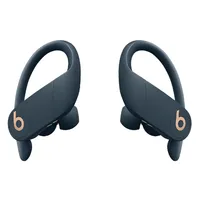TechRadar Verdict
The Shokz OpenRun (formerly known as the AfterShokz Aeropex) are the second best bone conduction sports headphones you can buy right now—the best are the Pro version. They are more expensive than previous models and deliver a noticeable, albeit slight jump up in sound quality. The slimmer design and improved battery life though are the reasons that will convince you it’s worth spending a bit more.
Pros
- +
Slimmer, lighter design
- +
Better battery life
- +
Improved waterproof rating
Cons
- -
Minor sound improvements
- -
Buttons very close to each other
- -
Still slightly vibrate at higher volume
Why you can trust TechRadar
The Shokz OpenRun are the flagship bone conduction headphones from Shokz, a company which changed its name from AfterShokz in December 2021.
Shokz has been in the running headphones game for a few years now, and in that time it’s had one goal; to build open ear headphones you can run, cycle and work out with, all without entirely blocking out the world around you.
The brand has gone all in on bone conduction technology built into an over the neck design to make that happen. With the Shokz OpenRun—originally known as the AfterShokz Aeropex—it’s managed to wrap that tech in something that’s slimmer and more durable, all while adding new bone conduction tech to improve sound quality.
Headphone type: Open-ear
Weight: 26g
Battery life: 8 hours
Waterproof rating: IP67
Colour options: Black, blue, grey, red
These bone conduction headphones sit between two other models from Shokz. Including the cheaper Trekz Air headphones, which launched back in 2017, and the upgraded Shokz OpenRun Pro, which came out in early 2022.
For runners particularly, Shokz has fast become the go-to option as more races impose bans on the use of closed headphones and in-ear headphones due to safety concerns. That's why the brand features in our best workout headphones and best running headphones guide and, unsurprisingly, fills the top three spots in our best bone conduction headphones guide, too.
With very little competition in that sporty open ear headphones space, the Shokz OpenRun have cemented the company's place as the number one pick for fitness lovers once again. Read on to find out how we found testing these bone conduction headphones in our Shokz OpenRun review below.
Shokz OpenRun review: availability and price
- They cost $159.95 / £149.95 / AU$219
- You might still find them listed as the AfterShokz Aeropex
The Shokz OpenRun headphones were launched in December 2021. You might still find them on some retailer websites as the AfterShokz Aeropex, before the brand changed its name.
Sign up for breaking news, reviews, opinion, top tech deals, and more.
They cost $159.95 / £149.95 / AU$219. When they launched, they were the most expensive option to go for in the Shokz family. But they've since been usurped by the Shokz OpenRun Pro.
For a cheaper alternative, take a look at our Shokz Trekz Air review, those bone conduction headphones launched in 2017. At the time, they cost the same as the Shokz OpenRun, but you can now find them for nearly $50 / £50 / AU$88 cheaper.
For better sound and more bass, take a look at our Shokz OpenRun Pro review. They cost slightly more than the regular Shokz OpenRun at $179.95 / £159.95 / AU$269.
For a budget option, read our Shokz OpenMove review. Those bone conduction headphones launched in 2020 and cost $79.95 / £79.95 / AU$129. But we did find they were a little uncomfortable to wear for long periods of time, so consider more expensive alternatives if your budget can stretch.

Shokz OpenRun review: design
- Smaller and lighter than the Air predecessors
- IP67 rating means you can sweat without worrying
With every new iteration, Shokz has successfully managed to shave a considerable amount of weight off the frame and the vital parts of its headphones, to make them lighter to wear and less noticeable when you’re on the move. Put the OpenRun up alongside the Trekz Air launched a few years earlier, and you can appreciate how much slimmer things have really gotten here.
Shokz says they're 30% smaller and 13% lighter, and while those sound like small numbers, the difference is very obvious as soon as you pick them up. These are considerably lighter than the last generation. It’s still the same neckband-style look, but it’s significantly reduced the size of the arms that sit just in front of your ears. The frame is skinner too.
Things have been upped in the durability stakes moving from an IP55 water-resistant rating to a IP67 rating. That means you’re getting something that’s equipped to be submerged in water up to one meter depth for 30 minutes. In reality, that rating is about doing a better job of fending off sweat and increasing its chances of surviving for a run in the rain and maybe dropping them in a puddle on the way as opposed to taking them for a swim. Bluetooth and water don’t mix anyway, so there’d be no reason to take them to the pool.
We did manage to brave a storm with them and get them sweaty for some indoor bike and rowing sessions and we are happy to report they’ve survived to live another day.

However, the skinnier, bendy frame did have us questioning the durability. There’s always been a bit of a question mark over how robust Shokz headphones are long term, and we’ve actually had some break on us in the past.
Fortunately, that’s not been the case with the OpenRun, and there hasn't been any worrying signs of wear. Though for peace of mind, we’d suggest placing them in the accompanying case as opposed to simply slinging them in your gym bag to make sure they do go the distance.
In terms of onboard controls, there’s two grippy physical buttons tucked away on the underside of one of the sides of the frame next to the charging port. They are predominantly used for turning the headphones on and adjusting the volume. On a run, those buttons still a feel a bit too close together, which makes swiftly turning things up or down can take a couple of attempts. There could be more done more to help distinguish between the two.
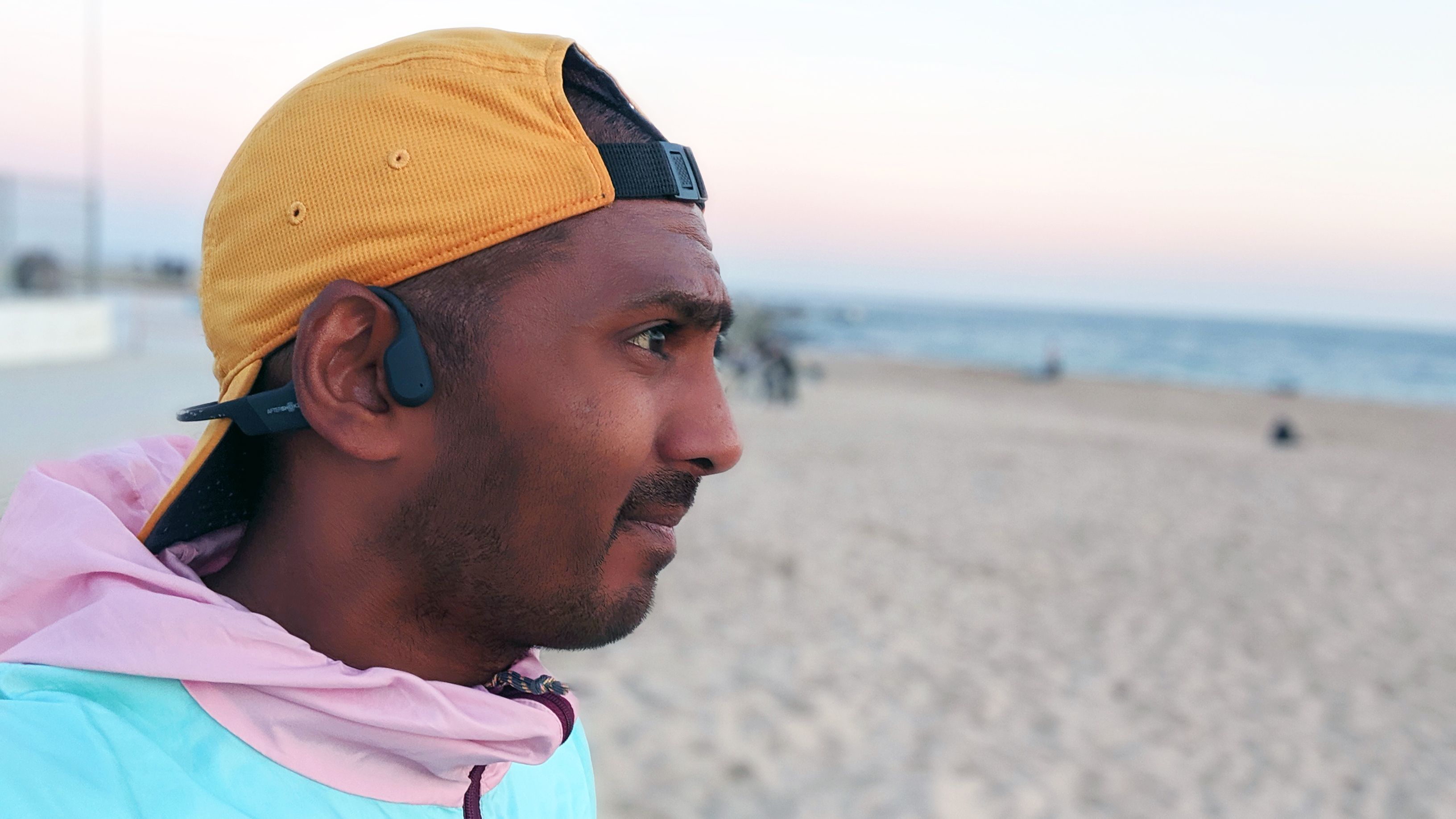
The charging port has changed from the covered USB one that we got on the Air to something that’s now proprietary. While that does mean you now have to keep hold of another proprietary charging cable (there’s actually two in the box), the move has meant Shokz can offer that increased waterproof rating to give the OpenRun that durability boost.
If you’re all about colors, there are more options to choose from this time too. We had the Cosmic Black model to try out, but there’s also a pick of red, blue and grey designs to choose from, and all come in at the same price.
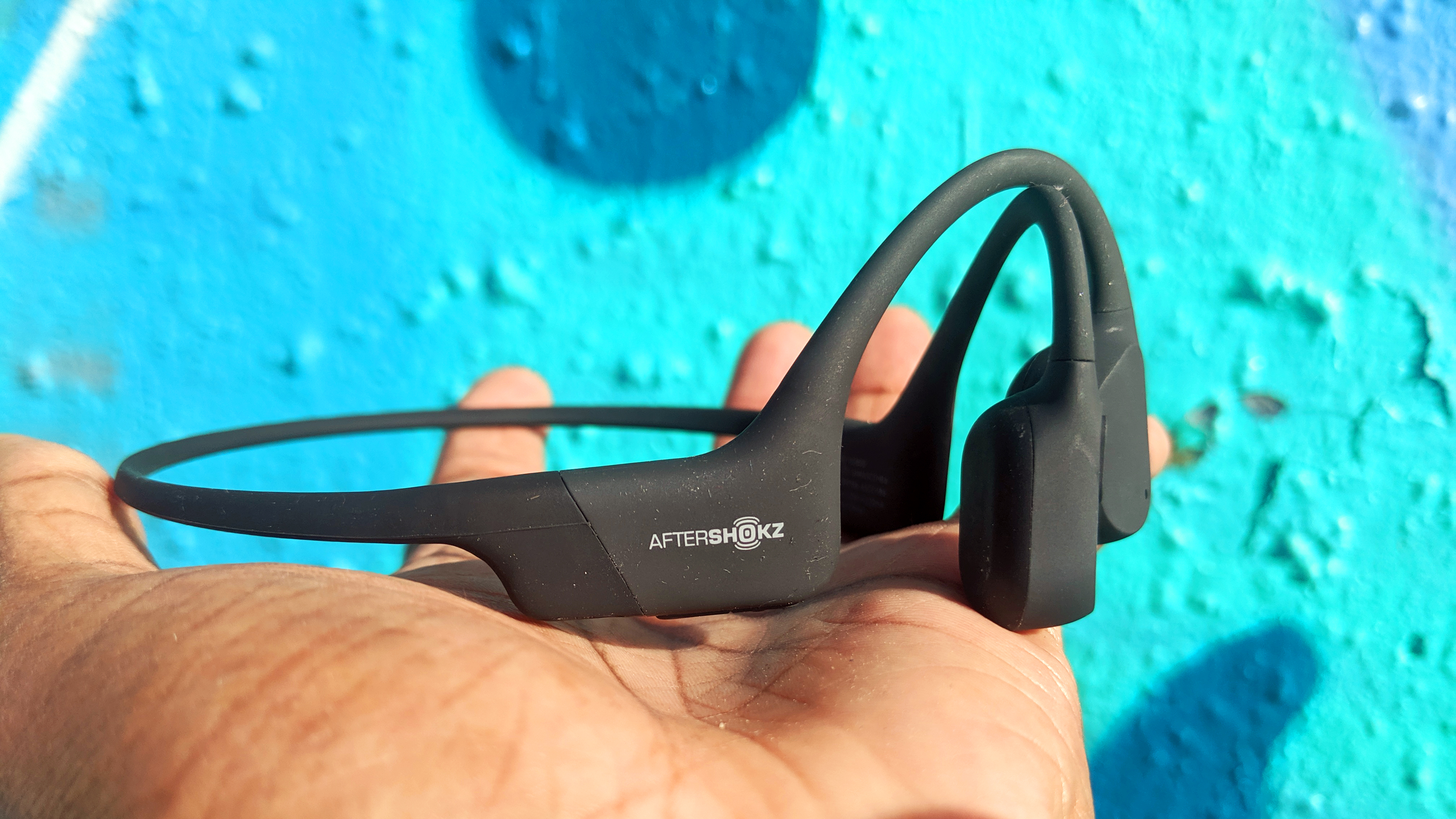
Shokz OpenRun review: battery life
- Improved battery life
- 8 hours of music playback and talk time
There’s the promise of improved battery life here with the Shokz OpenRun. You’re now getting eight hours of music playback and talk time, which is up two hours on the Airs. It also takes just one-and-a-half hours compared to two hours to fully charge up.
You’re now also getting an hour of music playback from a quick 15-minute charge. When you first turn the headphones on and tap the buttons, it’ll give you an status update on battery life to give you a heads up when it might be time for a spell on the charger.
If you’re in the gym for an hour a day or running for around the same amount of time, that’s plenty of battery to play with for the week ,and that’s pretty much what we found.
Shokz headphones have fallen a little short of those claimed battery lives in the past, but they seem to fair a lot better and more reliably on the OpenRun. That fast-charging option is a great addition too if, like us, you constantly forget to stick them onto charge when they have run out.

Shokz OpenRun review: audio performance
- More bass, less vibration and sound leakage than predecessors
- Decent call quality
As we said, bone conduction technology remains at the heart of how Shokz delivers audio, in a way that doesn’t entirely distract you from the world around you.
The way that bone conduction tech works hasn’t changed for the OpenRun, using transducers to guide through vibrations up your cheek bones and to your ears, to deliver sound without needing to have something sitting directly inside of your ears.
What has changed is what Shokz refers to as ‘PremiumPitch 2.0’. This time it’s using the transducers to channel those vibrations that are angled to sit better on the cheekbone, promising to deliver sound that possesses more bass, less vibration and less sound leakage.
With the first generation of Shokz, those issues were very prominent. You didn’t get a lot of power, they vibrated at higher volumes and they leaked a fair bit too. On the OpenRun, progress has certainly been made in some areas, but not in all. You are obviously not going to get the kind of results you’d expect from an in ear or over-ear headphones, but there are some noticeable improvements with the very gentle upping of bass, improved detail and overall upgrade in audio quality.
Those improvements are more noticeable at moderate volume levels. Venture in the gym or for a run outside with them, and those improvements do shine through. Unlike previous models, there’s a better balance between letting you hear the real world and letting your hear music or podcasts with more satisfying sound.
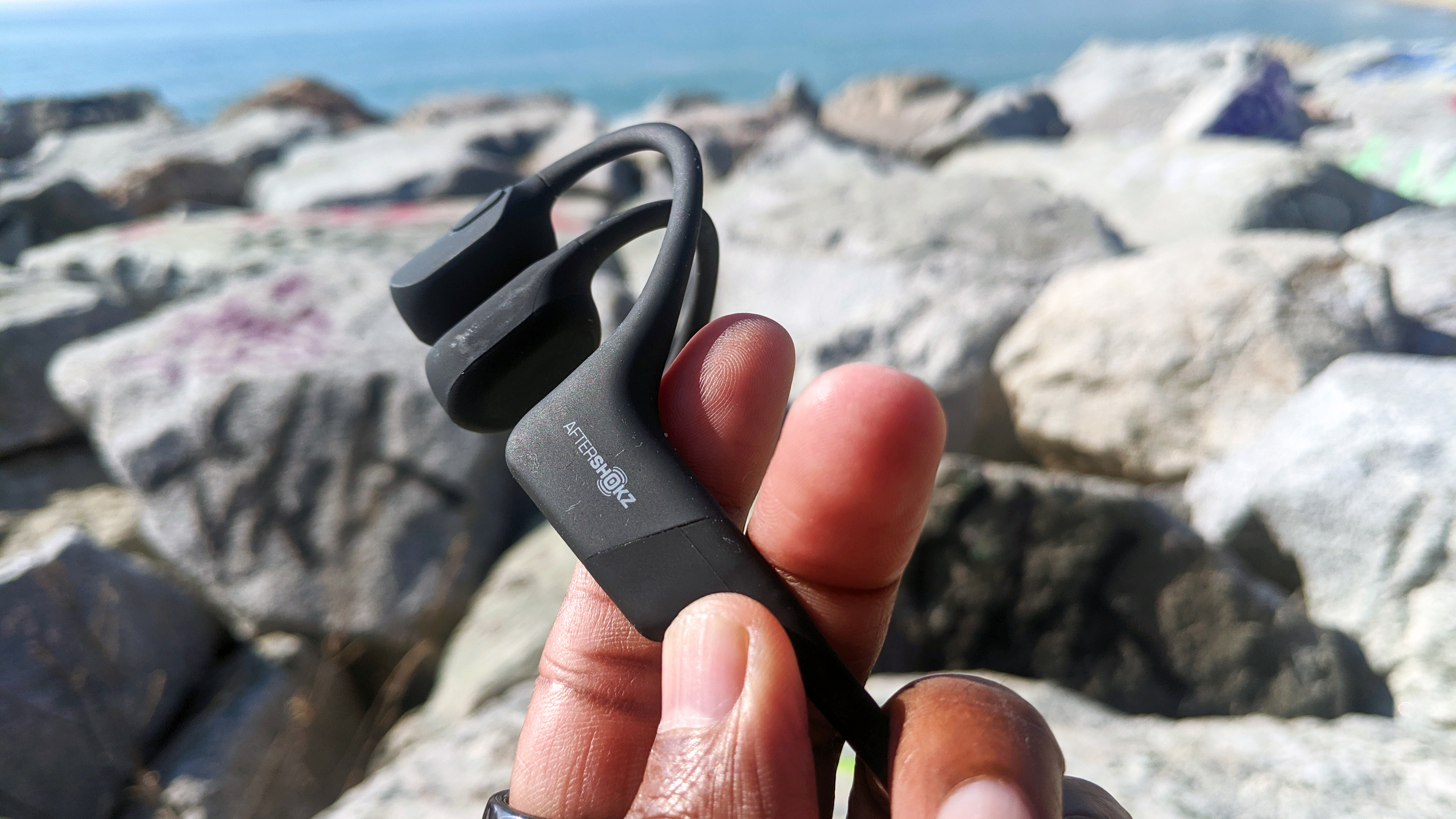
There is undeniably plenty of room for things to get better as that bone conduction tech improves, both in bass and clarity, but the differences between the Trekz Air and the OpenRun are noticeable.
Interestingly, there are ear plugs also included, which you can use to improve sound quality. It’s similar to what Shokz does with its swim-proof headphones, and it certainly has the desired effect of providing something more rewarding. You just have to be willing to plug your ears up, which does pretty much defeat the purpose of open ear headphones.
If you like breaking away from your workouts when a call comes through on your phone, there are dual, noise-cancelling mics to pick up your voice. You should have no problem taking those calls, though don’t expect exceptional levels of clarity here.
You still get a little of that vibration sensation at higher volumes though it’s been dialled down a little and it doesn’t ever feel uncomfortable or to a level that you’d want to stop using them. They also do seem to leak a lot less at more moderate volumes, though it’ll still be the case when you crank things up to the max.

Verdict
If you’re looking for headphones that are primed for getting sweaty with and you don’t want to drown out the world, the Shokz OpenRun are currently your best option behind the newer and upgraded Shokz OpenRun Pro.
From a design point of view, big strides have been made from the Air and those first generation Shokz headphones. They feel nicer to wear and the shrink in size does make a difference from a comfort point of view.
If we’re talking about sound quality, then the OpenRun don’t go leaps and bounds beyond they're predecessors, though they do show some subtle improvements, particularly in terms of clarity and bass.
They are $50 / £50 more than the Air, and for us the big difference is the design and the battery life. If you desire that extra time to use them between charges and something that sits lighter on the head, these are the ones to go for.
Right now, Shokz owns this space because there’s nothing really out there to give it some competition. Hopefully that’ll change in the future because there’s definitely an opportunity for others to push bone conduction tech even further.
Also consider...
If our Shokz OpenRun review has you considering other options, here are three more workout headphones you might want to check out.
Shokz OpenRun Pro
The OpenRun headphones have had an upgrade. The Pro version doesn't cost much more and you're getting better sound and better battery. We did find during testing that they now vibrate more noticeably against your skin. But if you can tolerate that tickle though, they're easy to recommend and are a slightly improved option over the regular Shokz OpenRun.
Read our full Shokz OpenRun Pro review
Shokz OpenSwim
If you want bone conduction headphones for running and swimming, then check out the OpenSwim from Shokz. We found these to offer clear sound, they're very lightweight and perfect for swimming. However, these are MP3 headphones rather than wireless, which means no Bluetooth for when you're out of the pool.
Read our full Shokz OpenSwim review
Beats PowerBeats Pro
If you're not sold on bone conduction headphones and simply need a way to listen to music as you run or workout, then take a look at the Beats PowerBeats Pro instead. They offer a fantastic and comfortable fit—even when you're pounding the pavement—and great sound.
Read our full Beats PowerBeats Pro review
- First reviewed March 2021.

Michael is a freelance journalist who has covered consumer technology for over a decade and specializes in wearable and fitness tech. Previously editor of Wareable, he also co-ran the features and reviews sections of T3, and has a long list of bylines in the world of consumer tech sites.
With a focus on fitness trackers, headphones, running wearables, phones, and tablet, he has written for numerous publications including Wired UK, GQ, Men's Fitness, BBC Science Focus, Metro and Stuff, and has appeared on the BBC Travel Show. Michael is a keen swimmer, a runner with a number of marathons under his belt, and is also the co-founder of YouTube channel The Run Testers.
